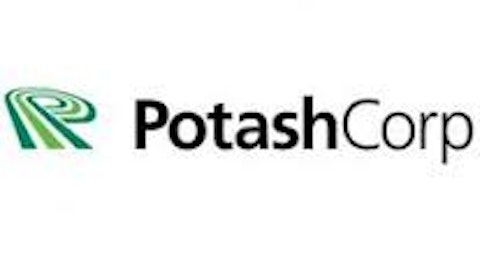Several European countries have proposed tariffs on American ethanol imports, while Brazil has fought back into the Lower 48 supply chain. In a strange reversal of fortunes, overpriced Brazilian ethanol is now more competitive than its cheaper domestic rival. What gives? Rather than institute a temporary mandate protecting domestic producers, the EPA has sat idly by, all the while qualifying Brazilian ethanol imports as advanced fuel.
Leaders at the National Ethanol Conference voiced their concerns that domestic corn ethanol wouldn’t be able to make up lost ground even when the market improves. Share prices of sugar behemoths Bunge Ltd (NYSE:BG) and Cosan Limited (NYSE:CZZ) seem to agree, as each has soared in the past year on higher demand for sugar sweeteners and an improving outlook for Brazilian ethanol. If the world closes its doors to American ethanol, then producers are likely to suffer further in an even more saturated market.
4. Cellulosic capacity poised to soar
Corn ethanol production is capped at 15 billion gallons per year under the current RFS, which, given land and irrigation constraints, is a good ceiling. A problem arises when you consider that the same mandate calls for 16 billion gallons per year of cellulosic ethanol by 2022. Increasing fuel economy and engine constraints will make it impossible for the United States to consume all of the proposed 31 billion gallons of ethanol each year.
That would represent 23% of 2011 gasoline volumes, which will only increase with the new CAFE standards as American automobiles use decreasing amounts of gasoline. This, of course, means that American ethanol exports will be a major factor in international markets and serves as yet another reason for the United States to stand up to Brazil and Europe.
KiOR Inc (NASDAQ:KIOR) is just one company changing the ethanol landscape. To be fair, the company produces drop-in cellulosic gasoline and diesel — not ethanol. However, the company’s fuels will be blended with traditional petroleum fuels until guidelines for novel fuels are hammered out. KiOR’s first facility will reach full capacity of 11 million gallons per year in 2013, with another 35 million gallon facility scheduled for completion in 2014. Through catalyst upgrades, the two facilities could reach annual capacities of 18 million gallons and 55 million gallons, respectively.
It may not seem like much, but the company estimates that it could realize a profit of nearly $2 per gallon of fuel within a few years. How? Renewable identification numbers, or RINs, are bought and sold with renewable fuels, so the EPA can ensure that refiners are meeting their blending requirements. As long as market demand exists, RINs add value for producers such as KiOR. In total, the company estimates that the top 10 oil refiners will be required to buy $74.1 billion of renewable fuels under the current RFS.
Foolish bottom line
The industry has fallen on hard times, but it’s poised for at least another decade of tremendous growth. Since most cars in the United States can run on E15 blends, there is no excuse for inaction. Not enough to convince you? Consider: If displaced barrels of oil are taken into account, then ethanol exports provided the United States with a $54.3 billion trading surplus in 2011.
Tough to ignore when you put it like that.
The article 4 Big Reasons to Increase Ethanol Blends originally appeared on Fool.com and is written by Maxx Chatsko.
Fool contributor Maxx Chatsko has no position in any stocks mentioned. Check out his personal portfolio or follow him on Twitter, @BlacknGoldFool, to keep up with his writing on energy, bioprocessing, and emerging technologies.The Motley Fool has no position in any of the stocks mentioned.
Copyright © 1995 – 2013 The Motley Fool, LLC. All rights reserved. The Motley Fool has a disclosure policy.

